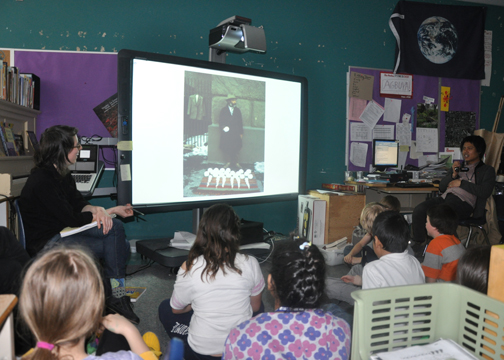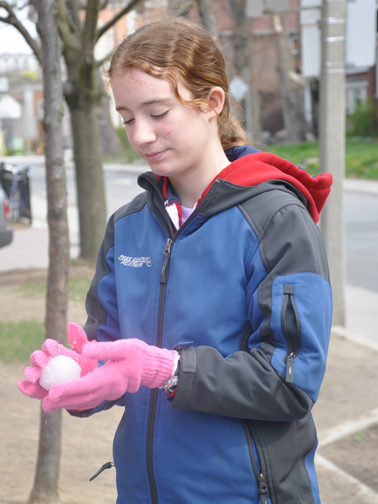Your Lupines or your Life was an eight-week engagement between a grade 6 classroom and artists Hannah Jickling and Helen Reed. The project takes its name from a 1974 Monty Python sketch about Dennis Moore, an inept highway robber who, with his catchphrase “your lupines or your life,” steals lupine flowers from the nobility to redistribute to the poor of his village.
This sketch became a touchstone for our thinking through value and the ways in which it can shift and change. Through a varied investigation that incorporated field trips, discussions, slide shows and exercises, we explored ideas of supply and demand, intrinsic value, relativity of value and surplus.
On a neighborhood resource audit we came across an unexpected site of surplus: a funeral home. The funeral home director told us that even though cut flowers are considered essential offerings to many funeral services, after the funeral many of these arrangements are discarded due to their somber appearance.
Discussions of flowers and value also led us to consider permanence and impermanence. Cut flowers have a life of no longer than 5 or 6 days. From the moment that they are harvested, an intricate system springs into action to deliver this expiring cargo to their destination. Through further investigation of the economy of flowers we learned about the Semper Augustus tulip bulb that, during Holland’s 17th century speculative marketplace, was worth the equivalent of one year’s wages for a wealthy merchant.
As a final project, we acquired some surplus floral arrangements from funeral homes, and with the help of local florist, Sarah Nixon, reconfigured these arrangements into wreaths and bouquets. These arrangements became “Abject Awards,” that were then bestowed to a public place or thing in recognition of its underappreciated abject qualities.


























